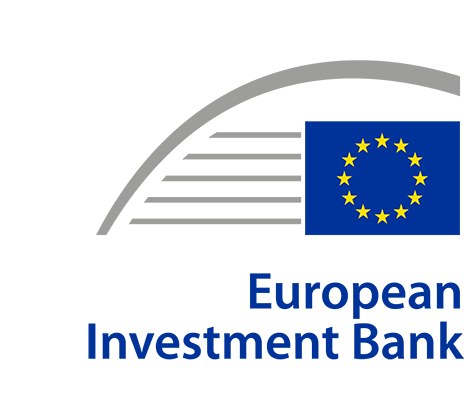Episode 2: Programming and design

A discussion with Oana Dordain, Deputy Head of Unit and Ieva Zālīte, Policy Officer of the European Commission’s DG REGIO (Directorate-General for Regional and Urban Policy), hosted by Desmond Gardner from the fi-compass team at EIB.
This is Calling the tune, a new fi-compass podcast series on financial instruments under the new Common Provisions Regulation. This is Desmond Gardner, from the fi-compass team at EIB. “Design is not just what it looks like and feels like. Design is how it works.” So said Steve Jobs co-founder of Apple. Today, I am joined by Oana Dordain, and Ieva Zālīte from DG REGIO in European Commission, to discuss the programming and design of financial instruments under the new CPR. Oana, Ieva welcome back.
Oana: Thank you Desmond. Hello everybody.
Ieva: Thank you very much and welcome to our listeners.
Let’s start with the programming of financial instruments. Ieva, at the fi-compass conference in December you described how in the new programming period there is a new intervention rationale. What do you mean by that?
Ieva: This is a very important question, especially now, when the managing authorities are actively working on the new programmes. In fact, it is one of the major novelties in the next regulation, which is to better integrate this delivery tool in the overall architecture of the programming by dividing the very extensive ex-ante assessment set we know from 2014-2020, into two major building blocks. And what I mean by that, is first and foremost, managing authorities have to make market assessment and evaluate certain investment needs to see what are the synergies and complementarities with other forms of support. The second block, will focus purely on ex-ante assessment for financial instruments implementation and delivery. For the future analysis, it is important to emphasize that analysis of market failures and investment needs is equally applicable to any form of support. The managing authorities will have to justify their choice of the form of support, be it financial instruments or grants, or maybe they will choose to do a combination of financial instruments together with grants. For the future, this is a major difference as compared to the current programming period. Having done this work already at the stage of the programming, we hope that it will facilitate a much faster set up of financial instruments and their implementation later on.
Oana, as a result of this approach I think we should expect to see more references to the potential use of financial instruments in the new programmes. Are there any particular sectors where you expect to see greater use of financial instruments in 2021-2027?
Oana: We are seeing, for the moment, some draft programmes and we still have to discuss with the national authorities because as I explained the justification of the grant support for financially viable investments is not there yet. We still have justifications, for example, we are continuing to use grants because we are used to this and financial instruments are difficult.
Our listeners should know that DG REGIO cannot accept such justifications. From this perspective, yes, we expect to see a greater use of financial instruments in the next programming period. For the moment, the sector that is the most supported by financial instruments is the SME sector, but we still consider that even there, there is still room for improvement and more financial instruments should be used to support SMEs. In line with the policy objectives of the Cohesion Policy for the future, we are also expecting to see more support for energy efficiency, for innovative SMEs and for sustainable and integrated urban development.
The first of the financial instruments’ articles of the new CPR, describes the steps a managing authority should take to design financial instruments. Once the programme is finalised, the next step towards the design of the financial instrument is the ex-ante assessment. How does the new CPR deal with this, Ieva? Are the requirements the same as the last period?
Ieva: Indeed, the future regulation makes the ex-ante assessment much simpler. If we compare with the provisions of the regulation of 2014-2020, we had a list of requirements for the ex-ante assessment. For the future, the regulations only include the necessary minimum requirements, allowing the managing authorities to decide on the implementations of the financial instruments. Moreover, these minimum requirements focus on what will be the amount of programme support contributed to this financial instrument, what leverage is expected, what are the targeted final recipients, what are the financial products that the financial instrument will deliver and how overall the financial instrument will contribute to the programme objectives. By reducing the number of requirements, we hope that this exercise becomes a managerial tool for the managing authorities, to make the decisions about the financial instruments set up and its implementation. The goal is for this decision to be helpful for managing authorities and for other stakeholders to see how the programme resources will deliver in their regions and in the programme areas.
Under the Coronavirus Response Investment Initiative, the requirement to review ex-ante assessments was temporarily suspended. Did you consider extending this to the new period?
Oana: When we drafted the future CPR we are not in the crisis. We are already envisaging that if an ex-ante assessment, which was done during this programming period, is still relevant for the national authorities to set up financial instruments for the future programming period, it can be used without being updated. My answer is that we are not extending this possibility but, based on the actual CPR, this is already possible. If the national authorities want to use existing ex-ante assessments, they can do so without any update.
The fi-compass factsheet published in May 2020 in relation to CRII also recommended that where an ex-ante was required it could be undertaken relatively quickly. What are your expectations, Oana, in relation to this under the new CPR?
Oana: I would say that this fi-compass factsheet published in May is still very relevant and I encourage our listeners to have a look on the fi-compass website and to see how we assessed and how we addressed this issue for the ex-ante assessment. I also think that part of the ex-ante assessment, from this 2014-2020 period, can be used for the programming because, as Ieva explained, the market failures have to be addressed at the level of the programmes. Relevant information is there for the national authorities, at the level of the programmes. Regarding the new financial instruments, there is a need for an ex-ante assessment, which should be a managerial tool. Managing authorities are free to use either the existing ex-ante assessment, or updated one or new ones, but we encourage them to use the knowledge, which already exists, at the level of the Member States. The purpose is to use the national banks or any international financial institutions, which could help them to have important added value, for the set-up of those financial instruments.
Another feature is the requirement that allows contributions to be made in successive programmes. This has implications for financial instruments that will be active beyond the end of a programming period and particularly equity funds. Previously the regulations allowed for escrow accounts to be used but this is no longer the case. Ieva, How do you expect managing authorities to take advantage of the new rules?
Ieva: I think it is a great opportunity for the managing authorities. And in fact, in the sense, to start setting up financial instruments now, under the current programming period. We think that the major new rule that we have in relation with financial instruments is simpler, more transparent and flexible. In addition, we hope that by taking advantage of these new provisions, it will very much facilitate the take up on financial instruments and their faster implementation. However, the meaning of this new rule is that the financial instrument operation is approved in one programming period and its implementation continues into subsequent periods. It means that the managing authorities, when thinking about their financial instruments and selecting their financial intermediaries will think of these financial instruments as lasting longer than one programming period. So they will not have to start the set-up of the financial instruments all over again in the next programming period. It also means that, for these financial instruments to continue longer, there will be a need for legal and financial agreements, which foresee such continuation. It means that the procurement was done appropriately and that the funding agreements envisage this continuation into the subsequent period. Another important point that we should not forget is that in each programming period, all this eligible expenditure related to that period is declared to the European Commission, so that we avoid situations of declaring the same expenditure twice. I think those managing authorities, which are thinking about financial instruments and think that there is an opportunity if they started today; can set up these financial instruments with a future vision into the next programming period.
And finally, is there anything else we need to know about programming and design under the new CPR? I think the articles are fairly clear and straightforward and is designed to keep the maximum flexibility. Is this correct, Oana?
Oana: Indeed, it was our purpose to have clear and flexible articles. I would also like to draw your attention to two aspects based on the questions that we have already received from Member States. One aspect is linked to the market failure to be addressed by the financial instrument. Financial instruments should provide support in line with the policy objectives to cover the identified market failures at the level of the underlying programmes. The condition for the market failure has to be fulfilled at the level of the financial instrument, and not at the level of each final recipient. There is no requirement to show that for each final recipient there was a lack of sufficient funding from market sources. The second aspect refers to the fact that financial instruments should not be used for refinancing purposes. Financial instruments should provide support for investments or parts of the investments, which are not physically completed or fully implemented at the date of the investment decision.
Thank you, Oana, Ieva, for taking part in this interview.
Oana: Thank you very much Desmond and thank you to the listeners. We hope that this was useful and I would like to say that we are waiting now to receive feedback from the national authorities and to see if the design we envisaged works in practice.
Ieva: Thank you very much from me as well and I would like to say and hope that the new rules that we presented today will help to set up the financial instruments faster and to accelerate the implementation later on.





